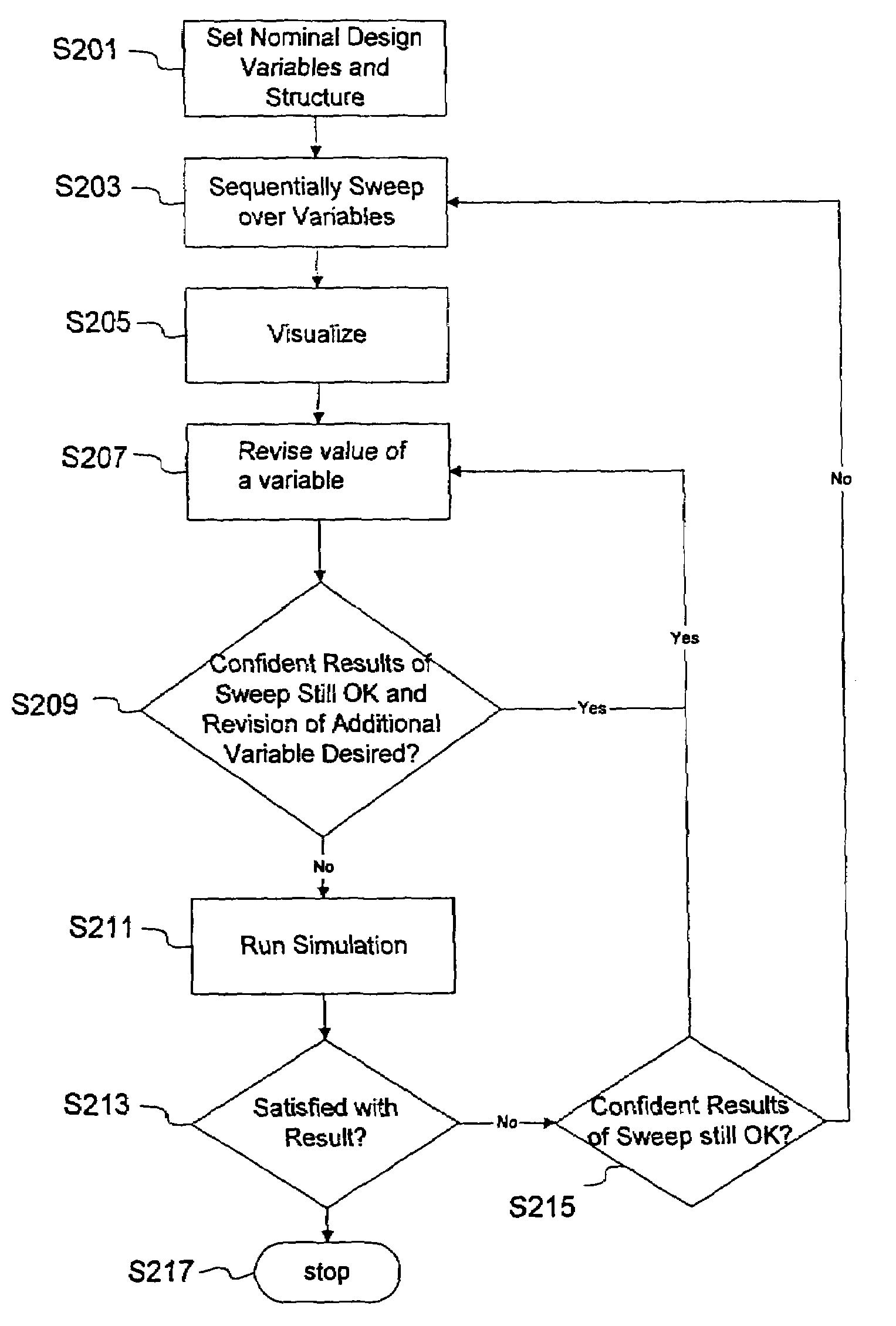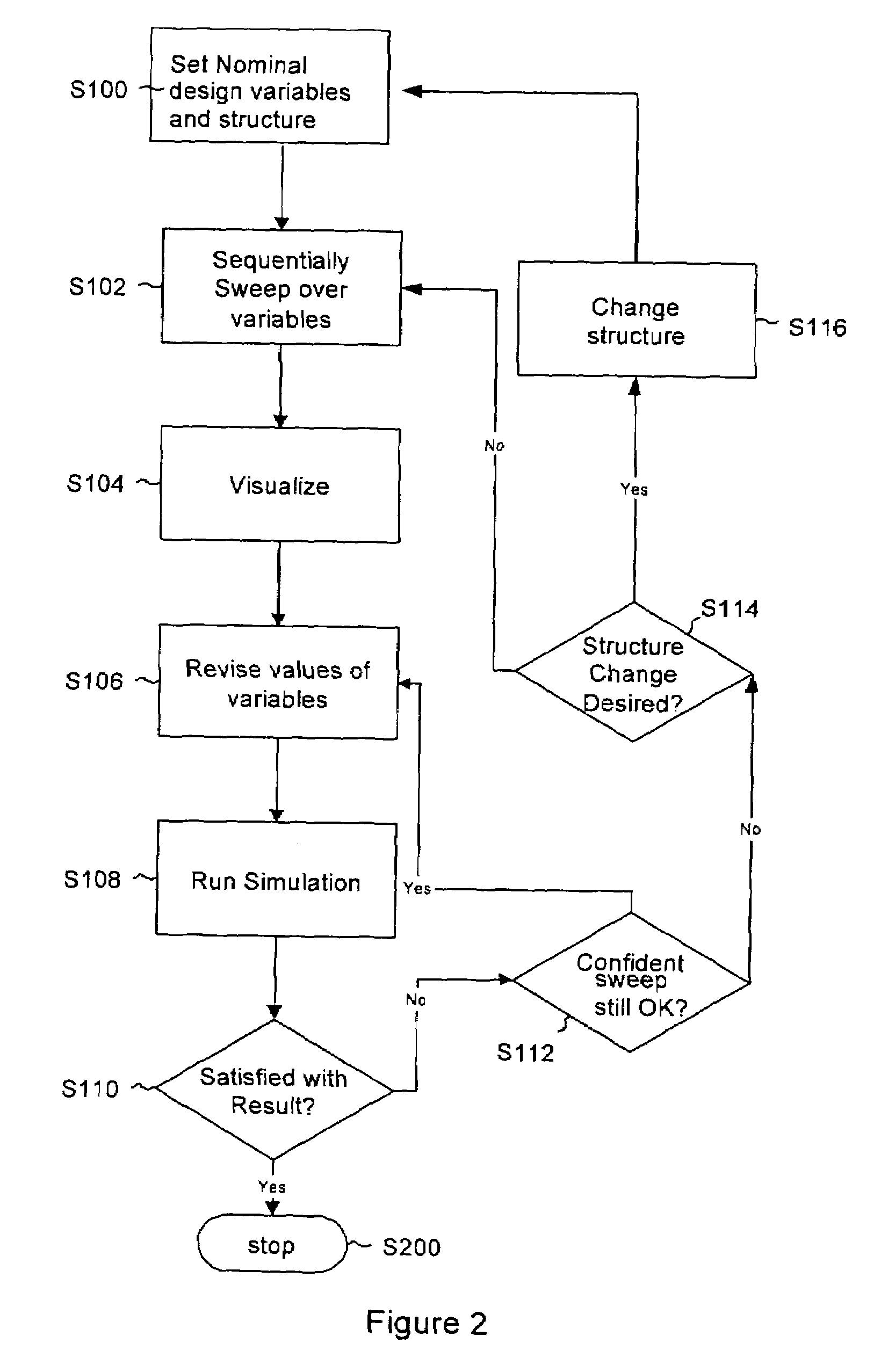Method of interactive visualization and parameter selection for engineering design
a technology of engineering design and parameter selection, applied in the field of engineering design, can solve the problems of increasing the difficulty of design, affecting the design process, and affecting the design process, and achieve the effect of promoting designer understanding
- Summary
- Abstract
- Description
- Claims
- Application Information
AI Technical Summary
Benefits of technology
Problems solved by technology
Method used
Image
Examples
Embodiment Construction
[0043]The present invention relates to a method of interactive visualization and parameter selection for engineering design.
[0044]It is an aspect of the present invention to apply the techniques from the method for semi-automated design to improve the efficiency of automated analog sizing techniques. A core insight is that we can proceed as if design parameters are not coupled. This insight can be developed into a simple algorithm, which cycles through the design parameters one at a time trying all possible values of the parameter, always keeping the best design so far as it goes.
[0045]The algorithm proceeds as follows:
Given an initial set of design parameters Init_params:
Best_design=Init_params
Repeat the following until termination criteria hit:
[0046]For each design parameter p,[0047]For each possible value v of p,[0048]Candidate_design=Best_design but altered to have v at p[0049]Evaluate performance characteristics of Candidate_design[0050]If Candidate_design is better than Best_D...
PUM
 Login to View More
Login to View More Abstract
Description
Claims
Application Information
 Login to View More
Login to View More - R&D
- Intellectual Property
- Life Sciences
- Materials
- Tech Scout
- Unparalleled Data Quality
- Higher Quality Content
- 60% Fewer Hallucinations
Browse by: Latest US Patents, China's latest patents, Technical Efficacy Thesaurus, Application Domain, Technology Topic, Popular Technical Reports.
© 2025 PatSnap. All rights reserved.Legal|Privacy policy|Modern Slavery Act Transparency Statement|Sitemap|About US| Contact US: help@patsnap.com



